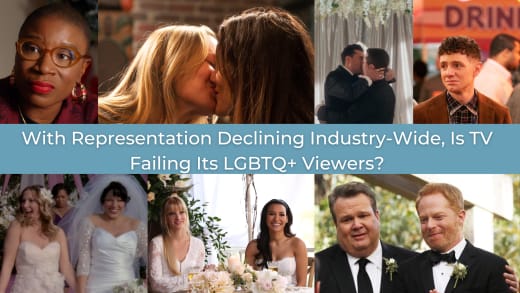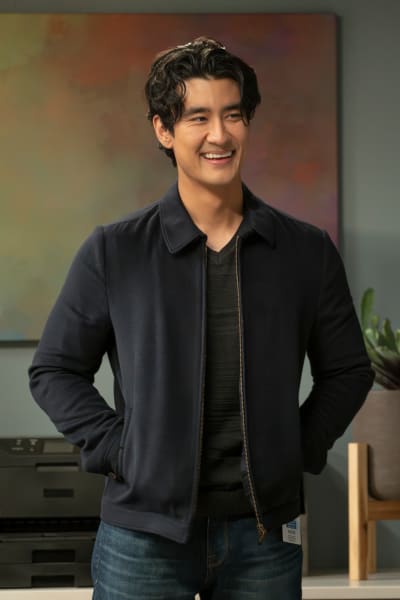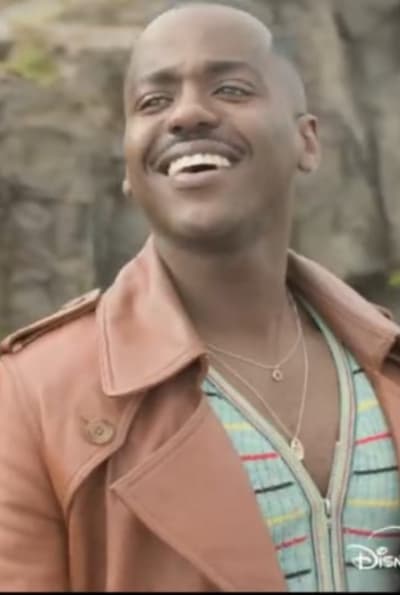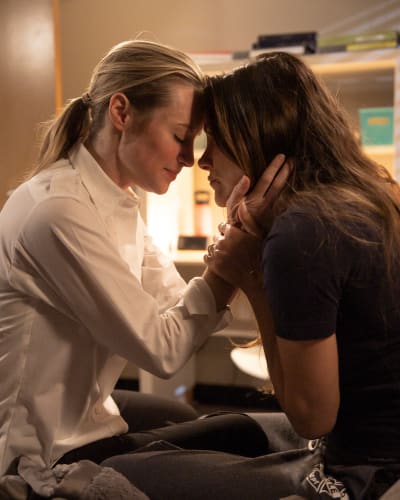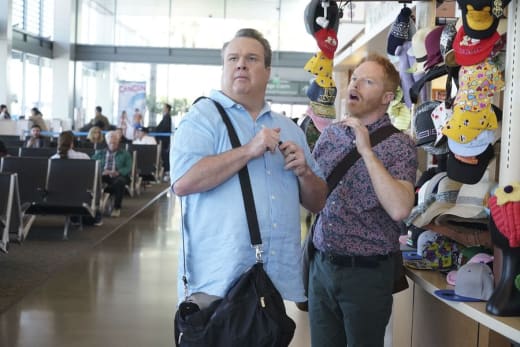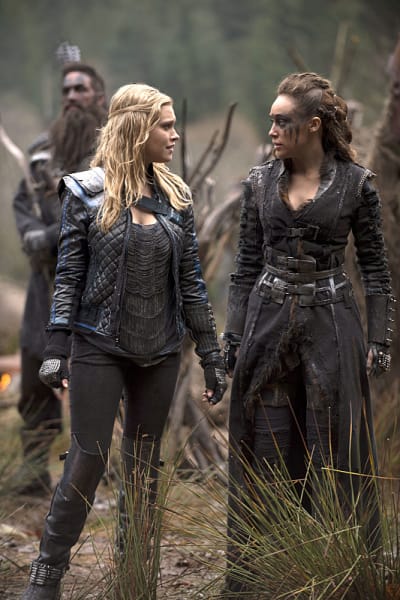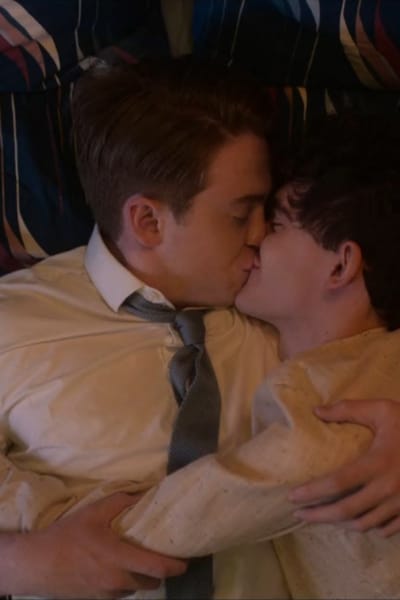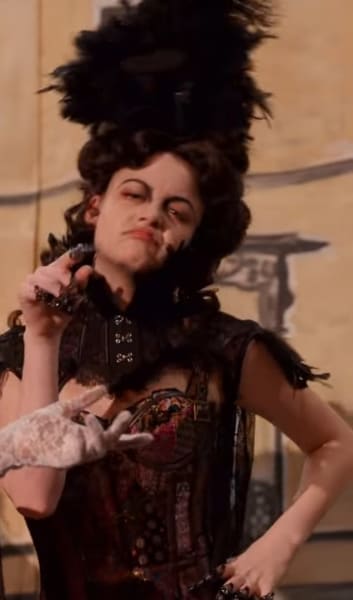With Representation Declining Industry-Wide, Is TV Failing Its LGBTQ+ Viewers?
 Haley Whitmire White
at
.
Haley Whitmire White
at
.
During the aptly named Golden Age of Television, it seemed that representation on television for the LGBTQ+ community was improving.
More network shows started to embrace not just token gay characters, but well-written storylines centered around LGBTQ+ leads.
Even for relatively progressive shows, it took a long time to get there.
Grey's Anatomy, for example, showcased gay and transgender characters in its earliest seasons by weaving them into the series' medical cases.
But it wasn't until Season 4, when Callie Torres realized she was bisexual, that a main character on the show was recognized as LGBTQ+.
Don't get me wrong, we rarely saw perfect gay relationships on the screen. Glee gave us Kurt, Blaine, Santana, and Brittany.
Modern Family had Cam and Mitchell. Grey's Anatomy's Callie and Arizona made history on network television.
Most of these shows ended as the years went on.
Grey's Anatomy has persisted, but it didn't have a significant gay male couple until Season 15, when Levi was introduced to Nico in an elevator.
In many shows, gay and trans characters are tokenized if they're allowed to exist at all.
If we're lucky, a character's queerness isn't treated like a commodity.
Still, even when it's done with minimal problems (like 9-1-1 has demonstrated with Henrietta and Karen), the LGBTQ+ of it all often hides in the shadows until it's convenient to the show's ratings.
That's not to say that there aren't currently any excellent gay characters on TV.
In fact, the opposite is true. Take Doctor Who, for instance: Ncuti Gatwa (previously of Sex Education fame) is playing the show's first queer version of the titular character.
But generally, where there's queer representation, tragedy, and disappointment are sure to follow.
The "bury your gays" trope has managed to persevere despite causing veritable outrage every time it's employed.
The tokenization of LGBTQ+ characters remains a barrier to meaningful representation, as does the lack of racial diversity among the queer characters that do make it to the small screen.
So, where does that leave members of the community who yearn to be represented on their favorite TV shows?
Often, the only option is to try to find ways to relate to poorly written characters.
Do real-life gay men actually feel seen when watching Cam and Mitchell on Modern Family?
We're talking about a couple that was so generically written that they never even shared a kiss until Season 2.
Probably not, but how many other family-friendly sitcoms between 2009 and 2020 even bothered including a married gay couple in their ranks?
Representation isn't just important for the gay community to see themselves in their favorite shows.
Studies have shown that LGBTQ+ representation on television has a real-world impact.
As more gay and trans characters get quality screen time, acceptance for the community goes up.
After news broke of the cancellation of yet another show widely praised for its quality representation of women, people of color, and LGBTQ+ people, fans have mobilized in an attempt to save their favorite shows from meeting early ends.
Both NCIS: Hawaii and Station 19 have amassed loyal followings over the years.
The shows share quite a few details in common: they're led by women characters, have racially diverse casts, and each has a popular queer female power couple.
Sadly (and unsurprisingly), both shows are slated for a series finale this month.
Petitions to save both shows have gained considerable online traction, primarily driven by fans clinging to the representation the series offers.
However, there's been no indication that either will be saved.
It's unfortunate for everyone, but especially the LGBTQ+ fans who struggle to see themselves.
It's rare that a gay or trans television character gets to have a happy life, free from trauma related to their identity, which makes it hard for queer people to imagine a happy life for themselves.
There's some good news: streaming platforms like Hulu and Netflix have created original series that positively depict LGBTQ+ characters living normal lives.
These shows, like Heartstopper, Ginny & Georgia, and Love, Victor, generally depict LGBTQ+ teens, though, which isn't always thrilling for queer adults.
Plus, is it fair that people in this community can only find representation behind a paywall?
The industry is failing viewers from all sorts of communities, from people of color to women to gay and trans people.
The answer isn't as simple as just writing new LGBTQ+ characters and shows, though.
Accurate representation in the industry starts at the top and on the inside.
Specifically, without queer voices in the writer's room, there is very little chance you're going to write a gay character that resonates with audiences successfully.
For far too long, gay and trans stereotypes have persisted because characters have been written by people who think they're qualified to speak for marginalized groups.
If shows want to improve their representation efforts, they must hire LGBTQ+ showrunners, directors, and writers.
Networks need to hear and buy pitches by queer creators.
It's not hard to figure out that the only way to include the LGBTQ+ community is to actually include them.
As the old saying goes, "Nothing about us without us."
Haley Whitmire White is a staff writer for TV Fanatic.
